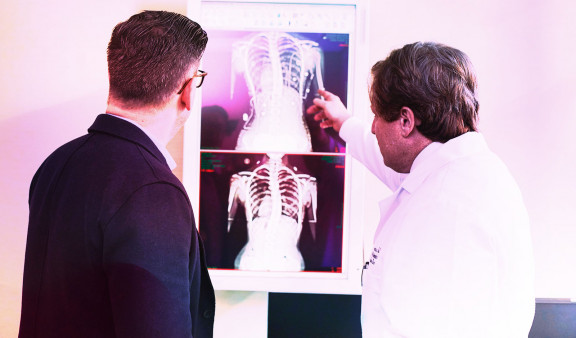
From medicine to telemedicine: how is digital technology changing healthcare?
With the evolution of technology (digital, Big Data, the development of applications, uberisation and more), several sectors have undergone, and are still undergoing, profound changes. The healthcare and medical sector is no exception.
The digitisation of medicine - the early days
In 1998, the introduction of the first version of the Carte Vitale health insurance card in France marked the first step towards digitisation. The Carte Vitale offered everyone (patients and healthcare professionals) a means of filling in their health treatment forms and submitting them to the health insurance fund online and, at the same time, provided a way to speed up healthcare reimbursements. More recently during this digitisation process, we have seen the introduction of the DMP (dossier médical partagé) shared medical record by the health insurance firm. The DMP is the equivalent of a digital health record designed to store and protect health-related information (treatments, test results, allergies, etc.) online and enable it to be shared with healthcare professionals. But, in my opinion, what really transformed the practice of medicine and access to healthcare was the implementation by the French government of a legal framework for telemedicine, through article 78 of act no. 2009-879 of 21 July 2009, the Hospital, Patients, Health and Territories (HPST) act.
What is telemedicine?
According to the articles of the act, telemedicine is “the practice of medicine using new information and communication technologies”. This is distance medicine, which allows healthcare professionals to connect with one another or connect directly with their patients.
Five telemedicine situations are set out in decree no. 2010-1229 of 19 October 2010:
- Medical assessment and triage, which we are familiar with in France through the ‘15’ emergency medical service. A doctor makes an initial diagnosis of the patient’s condition and then directs him or her to the most appropriate care. This is usually done over the telephone. More recently, however, the free “MY 15” mobile application offers:
- Direct contact with the emergency department
- Geolocation with accuracy better than 10 metres
- The possibility of sending photos, if the triage doctor in the emergency department requests them, to make a better assessment of the severity of the situation.
- Access to the medical record and the inclusion of photos and personal information relating to the patient’s specific situation, as well as administrative information (identity details, telephone number, name of patient’s doctor...).
- Teleconsultation, which enables patients (alone or accompanied by healthcare professionals) to consult a doctor remotely by means of technological tools. The doctor can also carry out a global assessment of the patient by telephone, video call or email, and make a diagnosis. Thanks to dedicated websites and mobile applications, patients have easy access to a doctor, and healthcare professionals have more flexibility in the way they work.
- Tele-expertise, which allows a medical professional to seek the opinion of one or more doctors remotely via information and communication technology. It is primarily a medical consultation and is asynchronous (there is no communication between the patient and the doctor). It involves two doctors during or after an initial consultation.
- Telemonitoring, which enables a medical professional to interpret, remotely and in real time, data collected in the patient’s living environment. This practice is becoming increasingly common thanks to the IoT and the development of connected medical devices, which may in the future give the elderly greater independence and potentially free up hospital beds.
- Teleassistance, which is designed to allow a medical professional to assist another health professional as he or she performs a procedure. The most striking example was the Lindergh operation?in 2001, which involved a patient at Strasbourg University Hospital having her gall bladder removed by a surgeon who was in New York.
With developments in communications, and faster speeds with 5G, these methods are becoming more common. We are already seeing a change in the patient-doctor relationship, and with an ageing population, the increasing accessibility of the smartphone and connected objects (connected medical devices), along with the data boom, opportunities for innovation in the healthcare sector are huge. According to Grand View Research, investment could reach 410 billion dollars in 2022.